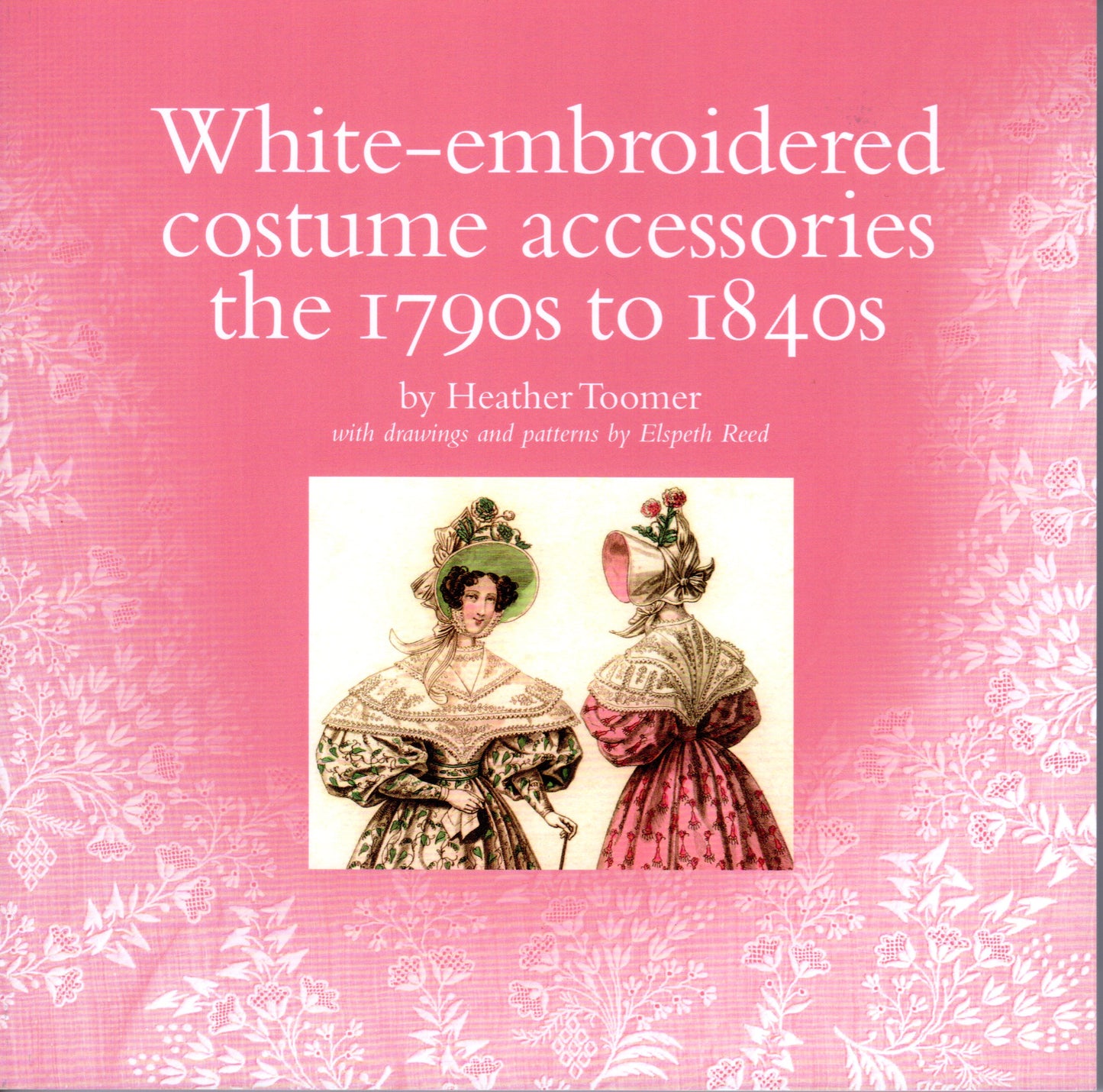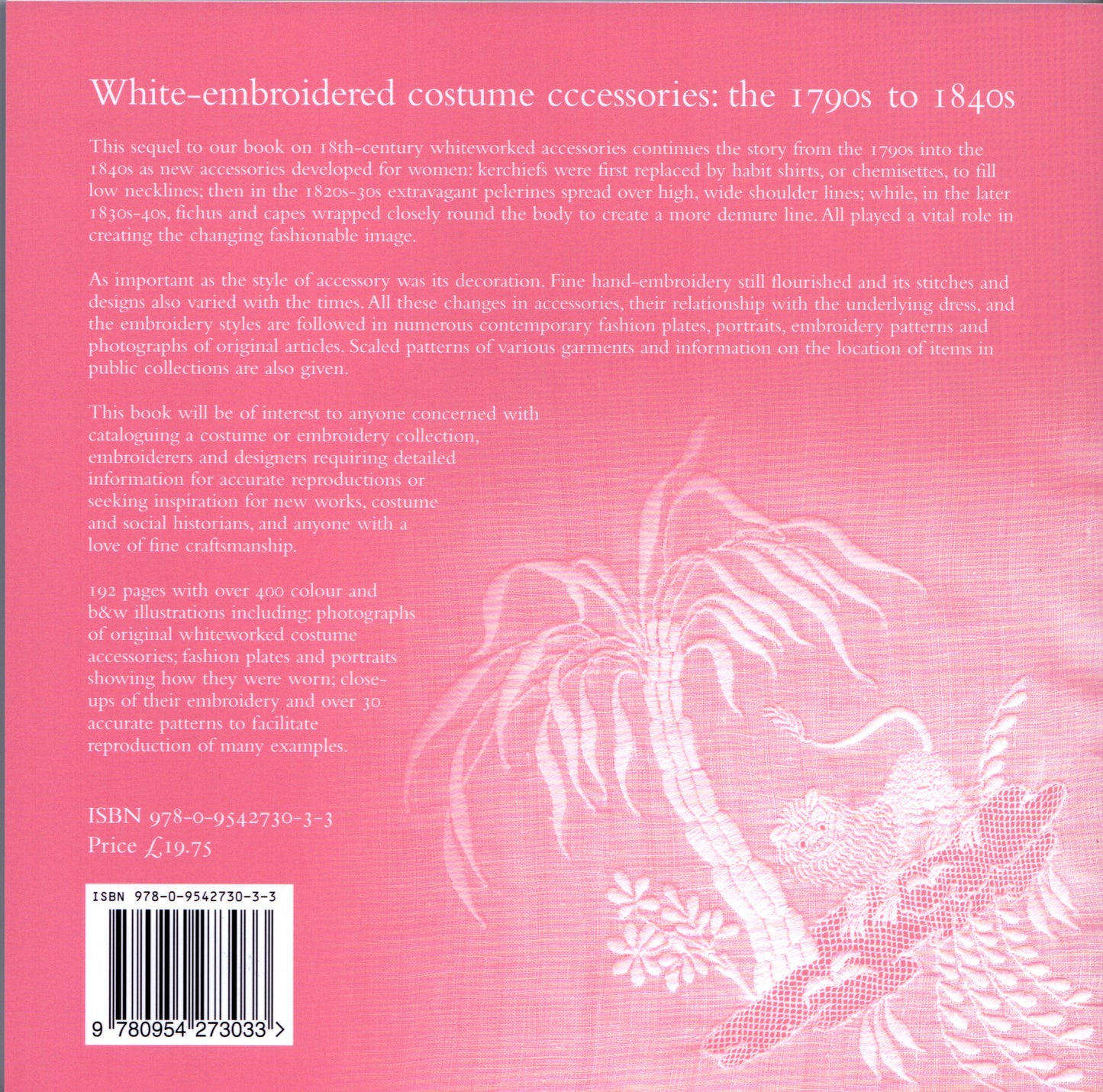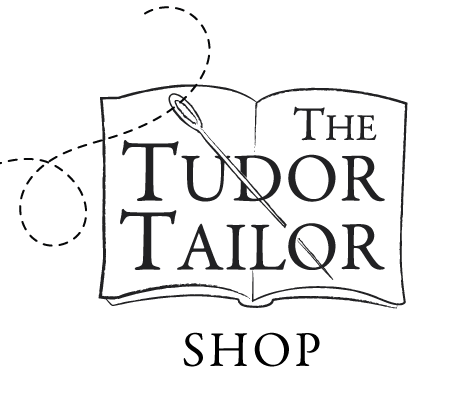1
/
of
2
White-Embroidered Costume Accessories the 1790s to 1840s
White-Embroidered Costume Accessories the 1790s to 1840s
Regular price
£33.00 GBP
Regular price
Sale price
£33.00 GBP
Unit price
/
per
Tax included.
Shipping calculated at checkout.
Couldn't load pickup availability
• by Heather Toomer
• 192 pages
• Over 30 patterns
• Over 400 illustrations in colour and black and white
• Paperback
• 8 1/4in x 8 1/4in (21cm x 21cm)
This sequel to Heather's book on 18th century whiteworked accessories, Embroidered With White, continues the story from the 1790s into the 1840s. It includes new accessories developed for women: kerchiefs were first replaced by habit shirts, or chemisettes, to fill low necklines; then in the 1820s-30s extravagant pelerines spread over high, wide shoulder lines; while, in the later 1830s-40s, fichus and capes wrapped closely around the body to create a more demure line. All played a vital role in creating the changing fashionable image.
The decoration of the accessory was as important as its style. Fine hand embroidery still flourished and its stitches and designs also varied with the times. All these changes in accessories, their relationship with the underlying dress, and the embroidery styles used are followed in numerous contemporary fashion plates, portraits, embroidery patterns and photographs of original articles. Scaled patterns of various garments and information on the location of items in public collections are also given.
This book will be of interest to anyone concerned with the care and cataloguing of a costume or embroidery collection, embroiderers and other designers seeking inspiration, fans of lace, costume and general social historians and anyone with a love of fine craftsmanship.
Heather Toomer is a freelance lecturer, author and consultant on antique lace and whitework embroideries, being particularly concerned with their identification, their use in costume and the history of their craft industries. Heather has worked with several museums over her 45 year career, advising and assisting with collections and displays, including a review of the hand-made lace collection in the Nottingham Museum. This review helped the lace collection as a whole, including its collection of machine laces, designated as a collection of national importance.
• 192 pages
• Over 30 patterns
• Over 400 illustrations in colour and black and white
• Paperback
• 8 1/4in x 8 1/4in (21cm x 21cm)
This sequel to Heather's book on 18th century whiteworked accessories, Embroidered With White, continues the story from the 1790s into the 1840s. It includes new accessories developed for women: kerchiefs were first replaced by habit shirts, or chemisettes, to fill low necklines; then in the 1820s-30s extravagant pelerines spread over high, wide shoulder lines; while, in the later 1830s-40s, fichus and capes wrapped closely around the body to create a more demure line. All played a vital role in creating the changing fashionable image.
The decoration of the accessory was as important as its style. Fine hand embroidery still flourished and its stitches and designs also varied with the times. All these changes in accessories, their relationship with the underlying dress, and the embroidery styles used are followed in numerous contemporary fashion plates, portraits, embroidery patterns and photographs of original articles. Scaled patterns of various garments and information on the location of items in public collections are also given.
This book will be of interest to anyone concerned with the care and cataloguing of a costume or embroidery collection, embroiderers and other designers seeking inspiration, fans of lace, costume and general social historians and anyone with a love of fine craftsmanship.
Heather Toomer is a freelance lecturer, author and consultant on antique lace and whitework embroideries, being particularly concerned with their identification, their use in costume and the history of their craft industries. Heather has worked with several museums over her 45 year career, advising and assisting with collections and displays, including a review of the hand-made lace collection in the Nottingham Museum. This review helped the lace collection as a whole, including its collection of machine laces, designated as a collection of national importance.
Share




